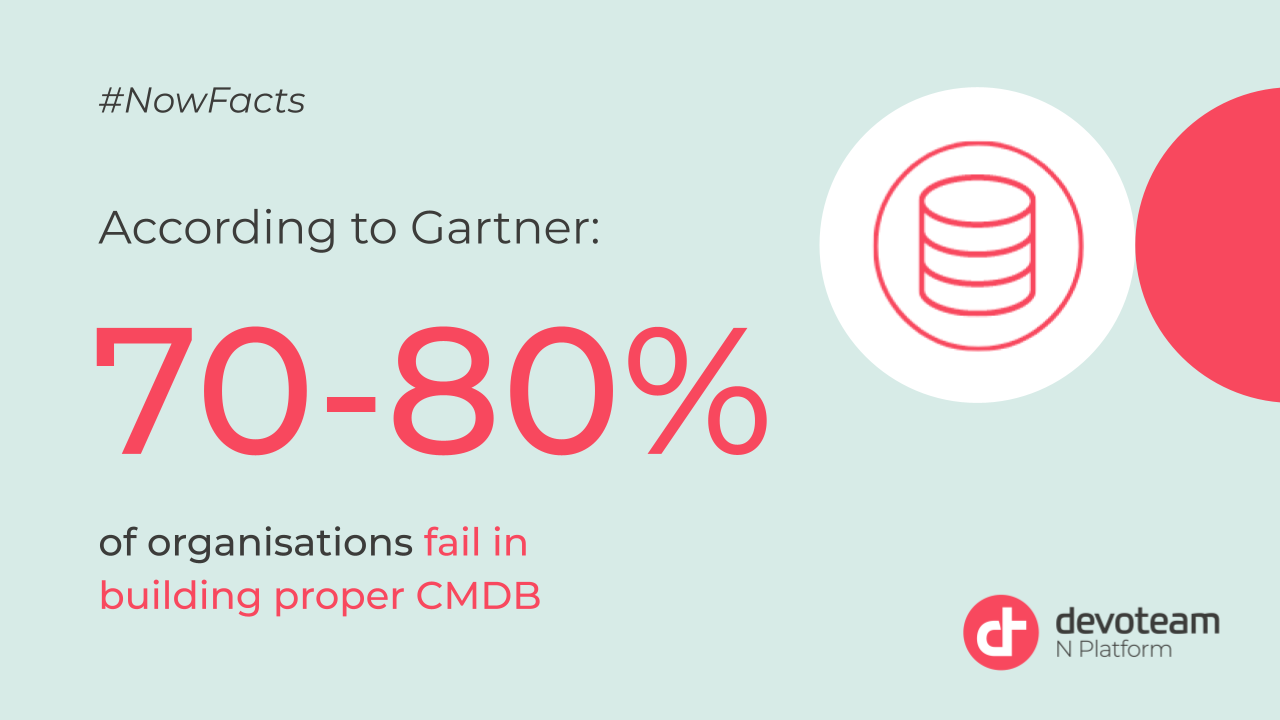A properly built CMDB (configuration management database) in ServiceNow is key to maintaining operational efficiency, minimising risks, and ensuring the smooth functioning of IT services within any organisation. But statistics show that most of CMDB fail.
According to Gartner, 70-80% of organisations fail to build proper Configuration Management Database.

The most common obstacles
1. Lack of formality in implementation and governance
Without clear guidelines and oversight, there can be inconsistencies in data entry, updates, and overall management of the CMDB. This lack of formality can lead to data inaccuracies and hinder the effectiveness of the CMDB in supporting IT operations.
2. Unreliable data sources, lack of automation
If data sources are unreliable or if there’s a lack of automation in gathering and updating configuration items, the CMDB may contain outdated or incorrect information. This undermines its usefulness as a reliable source of information for IT Service Management or Cyber Security teams.
3. No alignment with business outcomes
Without this alignment, the CMDB may not prioritise the right data or support the needs of key stakeholders. This can result in wasted resources and missed opportunities to leverage the CMDB. Lack of alignment will threaten CMDB’s ability to improve IT service delivery and support business objectives.
4. Customised without understanding what is supported out-of-the-box
Even though ServiceNow provides a robust set of out-of-the-box features for building and managing a CMDB, customising it without a thorough understanding of these built-in capabilities can lead to unnecessary complexity and maintenance challenges. It’s important to leverage the platform’s native functionality whenever possible. Customise only when truly necessary to avoid introducing unintended consequences that can make your CMDB fail.
5. Too much or too little data
A common challenge in CMDB implementation is striking the right balance between capturing enough data to support ITSM or other operational processes and avoiding information overload. Inaccurate or incomplete coverage of large amounts of data elements can result in a cluttered and unwieldy CMDB, making it difficult to extract actionable insights. Conversely, focusing solely on a limited set of data may overlook important dependencies and relationships among configuration items.
6. Inaccurate data
Inaccurate data undermines the trustworthiness of the CMDB and erodes confidence in configuration management processes. Whether due to manual errors, outdated information, or data inconsistencies, inaccuracies in the CMDB can lead to poor decision-making and operational inefficiencies.
7. Not tied into other processes like Incident, Change and Service Management
By linking configuration items to incidents, changes, and service requests, organisations can gain better visibility into the impact of changes. They can also facilitate faster incident resolution, and improve overall service delivery. Failing to integrate the CMDB with these processes limits its effectiveness and diminishes its ability to support end-to-end IT service management.
How to avoid CMDB fail
There is no easy fix to any of these challenges. Before you start building your CMDB, you need to really think about all of these aspects and, ideally, get some guidance to make sure your platform works well. Make sure you are getting the right information and start planning with the 7 common obstacles in mind.
At Devoteam, we helped many customers set up and maintain healthy CMDB. Do not hesitate to reach out to our team with your questions or join our upcoming interactive workshop – “The University of CMDB” on June 13th.

5th December, 2024 | 14:00 – 15:00 CET
The University of CMDB
Join our interactive workshop for service management professionals who seek to get their organisation’s configuration management back on track. Hear about the most common challenges faced and learn how you can use best practice to overcome them.
